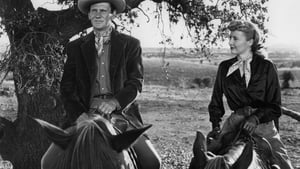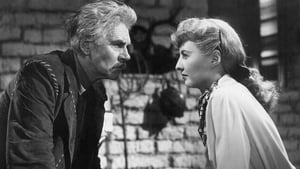Contact: [email protected]
Video Sources 0 Views

Synopsis
[ez-toc]




Introduction
The world of old movies holds a unique charm, a nostalgia that transports audiences to a bygone era of storytelling. In this realm, “The Furies Colorized 1950” emerges as a cinematic gem, bridging the gap between the past and the present. This article explores the impact of colorization on the classic Western film, “The Furies,” and examines whether the colorized version does justice to the original black-and-white masterpiece.
Read Media File Transfer Agreement: Terms and Conditions
Read FAQ
Brief Explanation of The Furies Colorized 1950
Directed by Anthony Mann and starring luminaries like Barbara Stanwyck and Wendell Corey, “The Furies” is a quintessential piece of Western cinema from the 1950s. Its narrative unfolds against the backdrop of Tucson, Arizona, drawing inspiration from Niven Busch’s novel. The film presents a unique blend of Western aesthetics and Greek tragedy elements, setting it apart from the traditional offerings of the genre. Now, with the advent of colorization, “The Furies Colorized 1950” aims to reintroduce this classic to a new generation, posing questions about the delicate balance between preservation and modernization.
The Furies Colorized: A Blend of Western Drama and Greek Tragedy
Overview of The Furies Colorized
Released in 1950 by Paramount Pictures, “The Furies Colorized” weaves a tale of power, family dynamics, and the harsh realities of the Old West. Anthony Mann, known for his contributions to film noir, brings his directorial prowess to the Western genre, infusing it with a sense of dark drama. The stellar cast, including the indomitable Barbara Stanwyck and the charismatic Wendell Corey, elevates the film to a position of prominence within the cinematic landscape of its time.
Unique Blend of Western Aesthetics and Greek Tragedy Elements
What sets “The Furies Colorized” apart is its daring fusion of Western tropes with elements of Greek tragedy. The film delves into themes of familial conflict, power struggles, and the consequences of unchecked ambition. The expansive landscapes of Tucson, Arizona, serve not just as a backdrop but as a character, influencing the narrative and the characters’ destinies. This distinctive approach to storytelling marks “The Furies Colorized” as a standout within the Western genre.
Tucson, Arizona: Shaping the Story and Characters
The choice of Tucson as the film’s setting is not arbitrary. The desert landscapes and the harsh beauty of the region become integral to the narrative, reflecting the untamed nature of the characters and the challenges they face. Mann’s directorial vision embraces the Western ethos while infusing it with a sense of tragedy, creating a cinematic experience that lingers in the minds of viewers.
The Furies in the Context of 1950s Western Cinema
As we reflect on “The Furies Colorized,” it is essential to place it within the broader context of 1950s Western cinema. The genre was undergoing a transformation during this period, exploring nuanced themes beyond traditional cowboy and Indian narratives. Mann’s film aligns with this evolution, presenting a complex and layered narrative that transcends the conventions of its time. Adapted from Niven Busch’s novel, “The Furies Colorized” showcases the cinematic possibilities inherent in the Western genre.
The Furies Colorized: Revitalizing a Classic Masterpiece or Diluting Its Artistry?
Colorization: A Controversial Practice in Film Restoration
Colorization, the process of adding color to black-and-white films, has been a contentious practice in the world of film restoration. While it aims to breathe new life into classics, the method often sparks debates about preserving the artistic integrity of the original work. “The Furies Colorized 1950” enters this discourse, challenging preconceptions and inviting audiences to reconsider their views on the intersection of tradition and innovation.
Decision to Colorize The Furies and the Transformation Process
The decision to colorize a classic film is not taken lightly, and “The Furies Colorized” is no exception. This colorized edition emerges as an artistic experiment, seeking to introduce the film to a contemporary audience that might be more accustomed to color visuals. The transformation process involves a meticulous approach, blending technological advancements with a deep respect for the original directorial vision.
Impact of Colorization on Visual Style and Narrative Themes
As viewers engage with “The Furies Colorized 1950,” the question arises: Does colorization enhance or detract from the film’s original artistry? The visual style of the colorized version becomes a focal point, with the desert landscapes of Tucson now adorned in hues that breathe new life into the iconic scenes. However, purists may argue that the monochromatic palette of the original film holds a unique charm that is irreplaceable.
Examining the Colorized Version: Aesthetics vs. Authenticity
Plot Summary of The Furies
To appreciate the impact of colorization, a revisit of the film’s narrative is essential. “The Furies” revolves around Vance Jefford, played by Wendell Corey, and his tumultuous relationship with his formidable and domineering mother, played by Barbara Stanwyck. The story explores themes of power, loyalty, and the consequences of ambition, weaving a tale that unfolds against the unforgiving backdrop of the Old West.
Strengths and Weaknesses of Colorization in The Furies
As we delve into the colorized version, it becomes evident that certain scenes benefit from the injection of color. The vast landscapes, once rendered in shades of gray, now come alive with a vibrancy that adds a layer of depth to the storytelling. However, the challenge lies in maintaining the balance between aesthetics and authenticity. Some argue that the colorized edition, while visually striking, risks diluting the stark beauty of the original black-and-white cinematography.
Assessing Walter Huston’s Final Role in Colorized Splendor
Walter Huston’s portrayal of T.C. Jefford, Vance’s father, is a cornerstone of “The Furies.” As the patriarch of the Jefford family, his performance in his final role before his passing adds gravitas to the film. In the colorized edition, the nuances of Huston’s expressions and the intensity of his performance take on a new dimension. Audiences are presented with a fresh perspective on a cinematic legend’s farewell performance.
The Furies Unleashed: Impact on Audience and Subsequent Reception
Initial Critical Reception and Enduring Legacy
Upon its release in 1950, “The Furies” received critical acclaim for its innovative approach to the Western genre. Its unique blend of drama, tragedy, and intense performances left an indelible mark on the cinematic landscape of the time. As the years passed, the film maintained its status as a classic, praised for its complexity and contribution to the evolution of Western storytelling.
Shifting Perspectives: Colorized Re-Release and Audience Reception
The colorized re-release of “The Furies” introduces the film to a new generation of viewers, sparking conversations about its relevance in contemporary cinema. The question of whether the colorization enhances or diminishes the film’s impact becomes subjective, as audiences with varying perspectives engage with this reinterpretation. While purists may resist the change, others may find the colorized version a gateway to appreciating the film’s narrative brilliance.
Maintaining Classic Status: A Challenge for Colorized Classics
The challenge for colorized classics lies in maintaining their status as timeless works of cinema. “The Furies” faces this challenge head-on, with the colorized edition striving to coexist with the original black-and-white version. The enduring legacy of the film hinges on its ability to resonate with audiences across generations, regardless of the visual lens through which they experience it.
Preserving Film Heritage: The Role of Restoration in Ensuring Longevity
Importance of Film Preservation
Regardless of the debate surrounding colorization, the preservation of old movies remains paramount. “The Furies,” in its various iterations, embodies the need to safeguard cinematic heritage. As technology advances, restoration efforts become increasingly sophisticated, allowing for the rescue of damaged films and the preservation of their original glory.
Restoration Technology: Advancements in Film Preservation
The technological landscape of film restoration has evolved, enabling a more nuanced and faithful approach to bringing old movies back to life. From the meticulous removal of scratches and blemishes to the restoration of sound quality, these advancements ensure that classic films, whether in black-and-white or colorized, can be enjoyed with the clarity and fidelity they deserve.
The Debate Continues: Balancing Artistic Integrity with Modern Audience Preferences
Artistic Integrity vs. Modern Audience Preferences
The tension between artistic integrity and modern audience preferences persists in the world of cinema. Filmmakers, restorers, and audiences grapple with the challenge of presenting old movies in a way that respects the original vision while catering to contemporary expectations. “The Furies Colorized 1950” finds itself at the intersection of tradition and innovation, raising questions about the future of presenting classic films to new audiences.
Alternative Approaches: Offering Original and Colorized Versions
One approach to navigating this tension is to offer both the original and colorized versions of classic films. This allows audiences to choose their preferred viewing experience while fostering an appreciation for the historical context of each version. “The Furies” may serve as a case study for how such alternatives can cater to diverse audience preferences without compromising the integrity of the original work.
Conclusion
“The Furies Colorized 1950” stands at the crossroads of tradition and modernity, inviting audiences to reassess their views on colorization and film preservation. The colorized edition, while sparking debates, serves as a gateway for new generations to discover the nuanced storytelling of this classic Western. As we navigate the delicate balance between aesthetics and authenticity, “The Furies” remains a testament to the enduring power of old movies to captivate and inspire. Whether experienced in its original form or through the lens of colorization, “The Furies” invites audiences to appreciate the cinematic artistry that transcends the boundaries of time and color.













